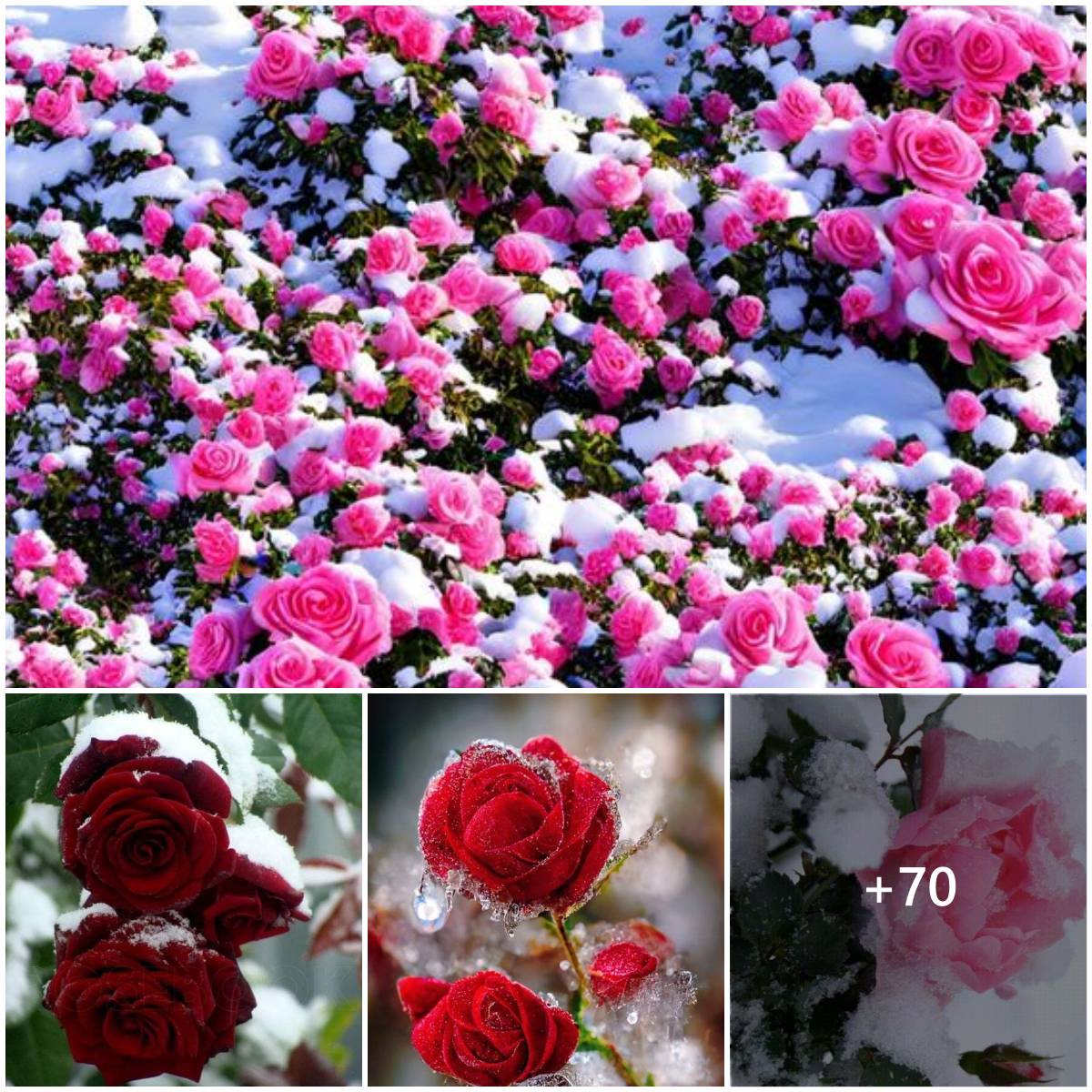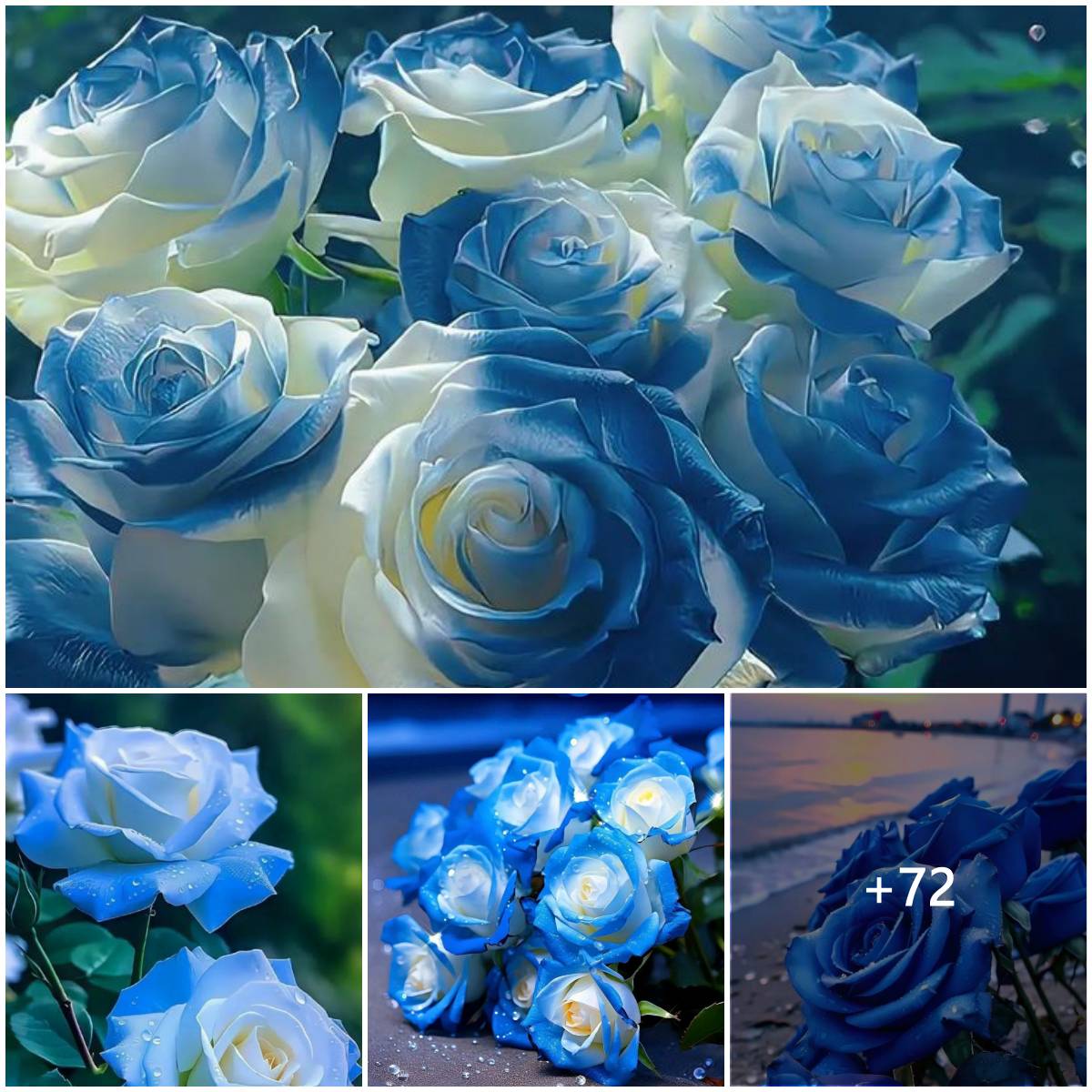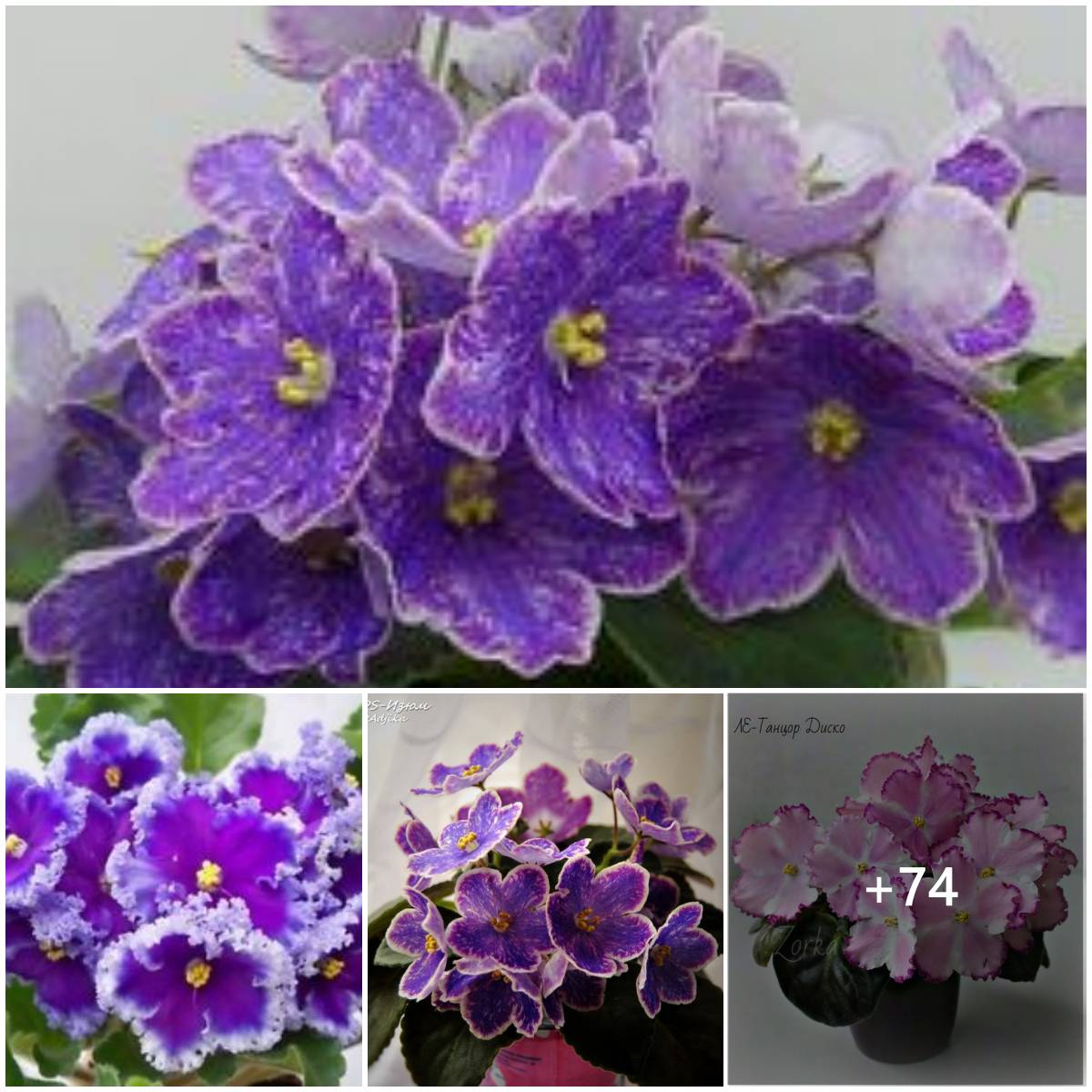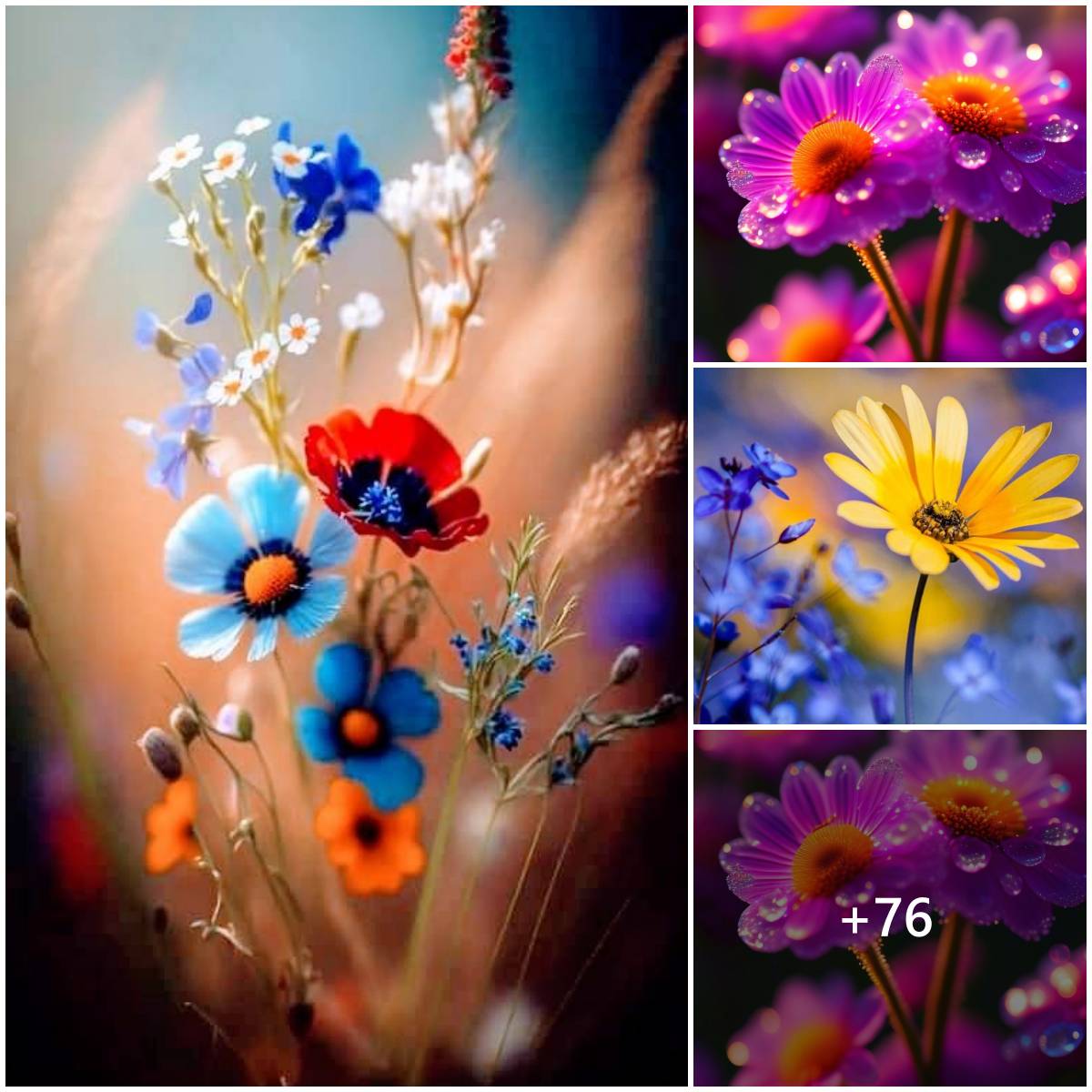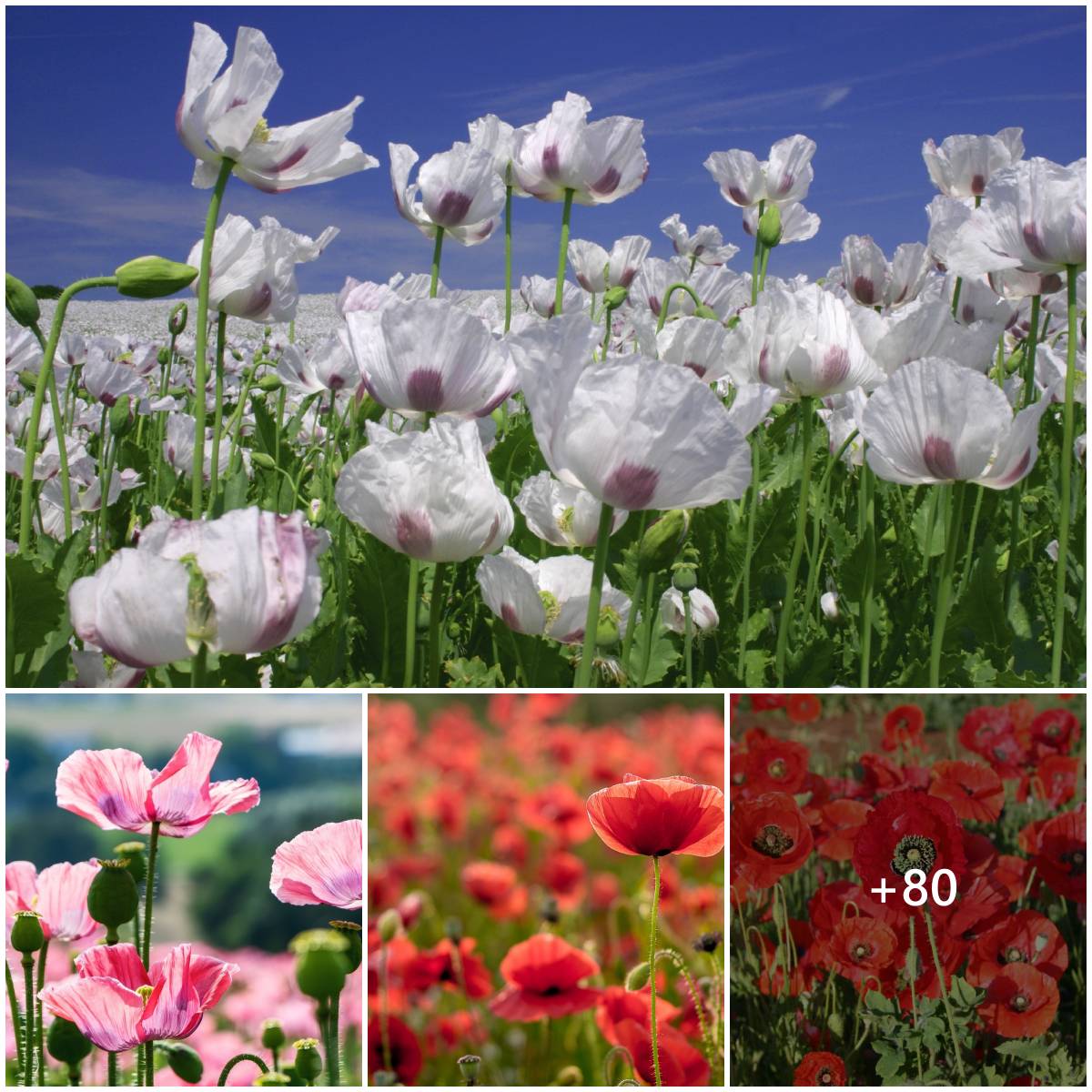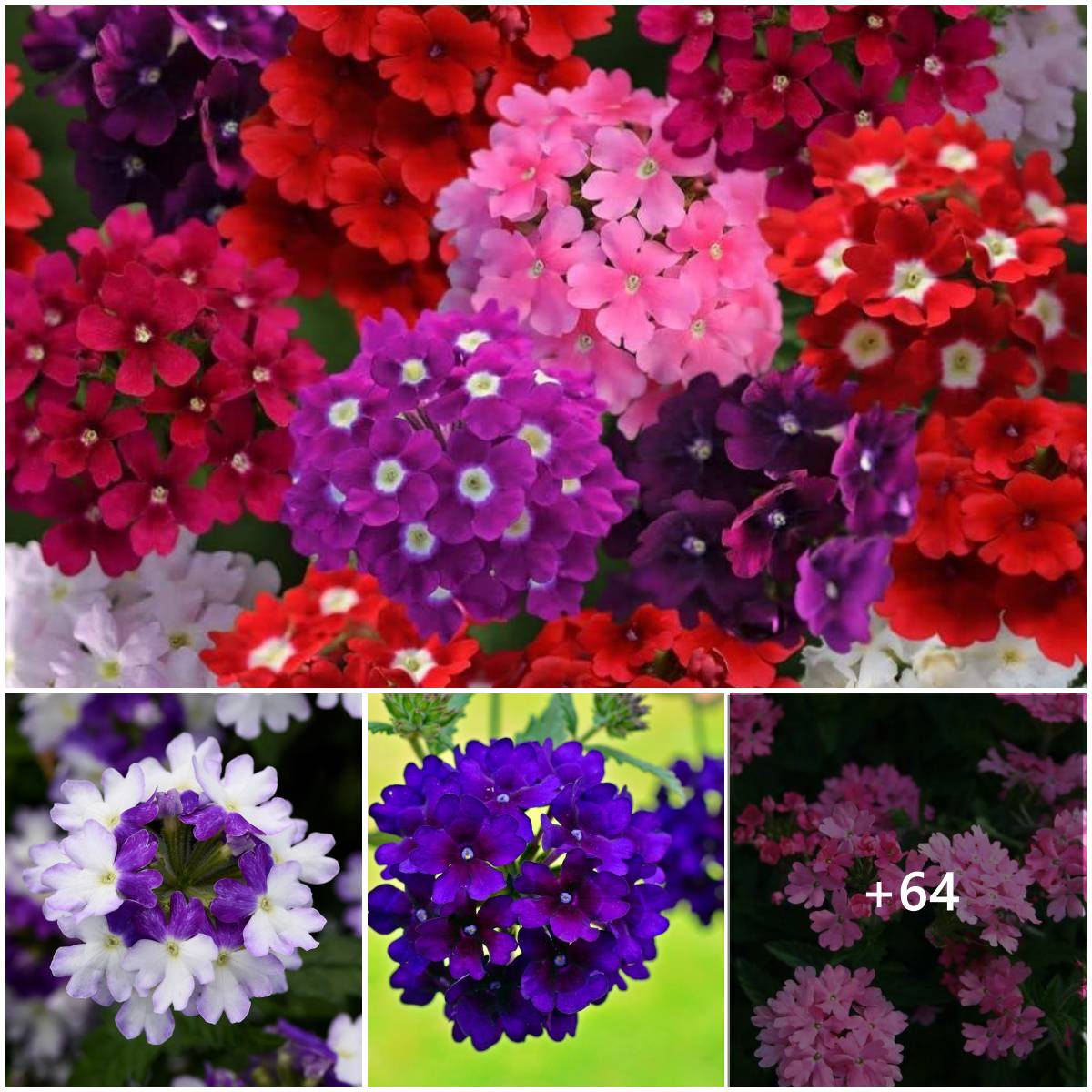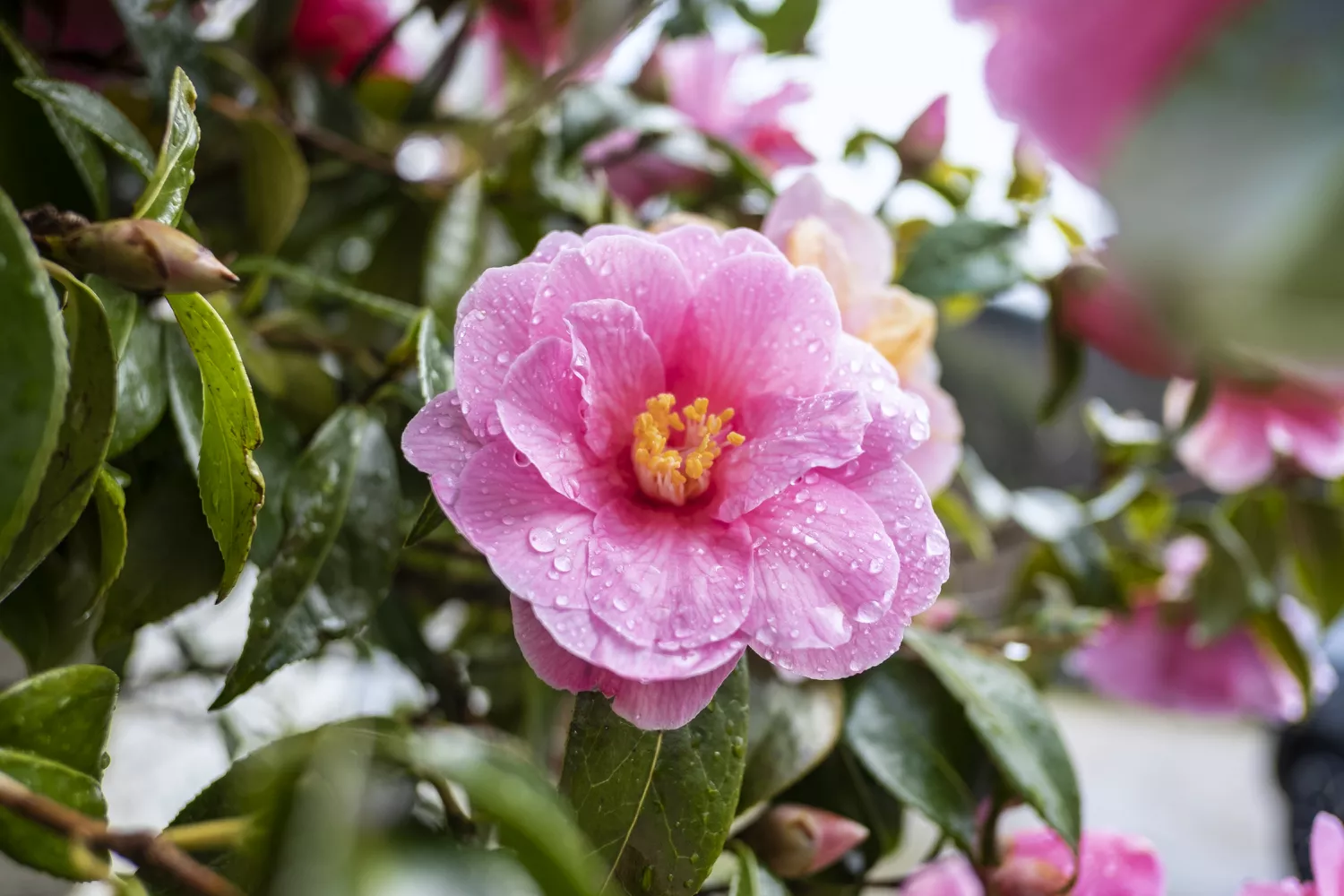
Pink is a versatile color in the garden. Depending on their tone, pink flowers can evoke a variety of moods, from warmth and comfort to energy and excitement. We’ve put together a collection of the most beautiful pink flowers to enhance your garden, from delicate pink roses to vibrant magenta coneflowers. Make the most of these flowers by learning how to combine this diverse palette with other landscape colors.
Pink flowers come in both warm and cool tones and can be combined with every color on the spectrum. Warm pinks such as coral, rose, salmon and blush are calming and convey feelings of peace, kindness, softness and nurturing. They combine well with other warm colors like yellow, red and orange.
Cool pinks have names like fuchsia, raspberry, bubblegum and magenta. They are more vibrant and lively, evoking energy and joy. Cool pink flowers complement blues and purples. Before choosing pink flowers for your garden, consider the general color scheme you want to build or highlight. Your garden will look best when you group flowers of the same color temperature together. Many of the flowers on this list come in a variety of colors to help you harness the power of pink in any garden setting.
Rose
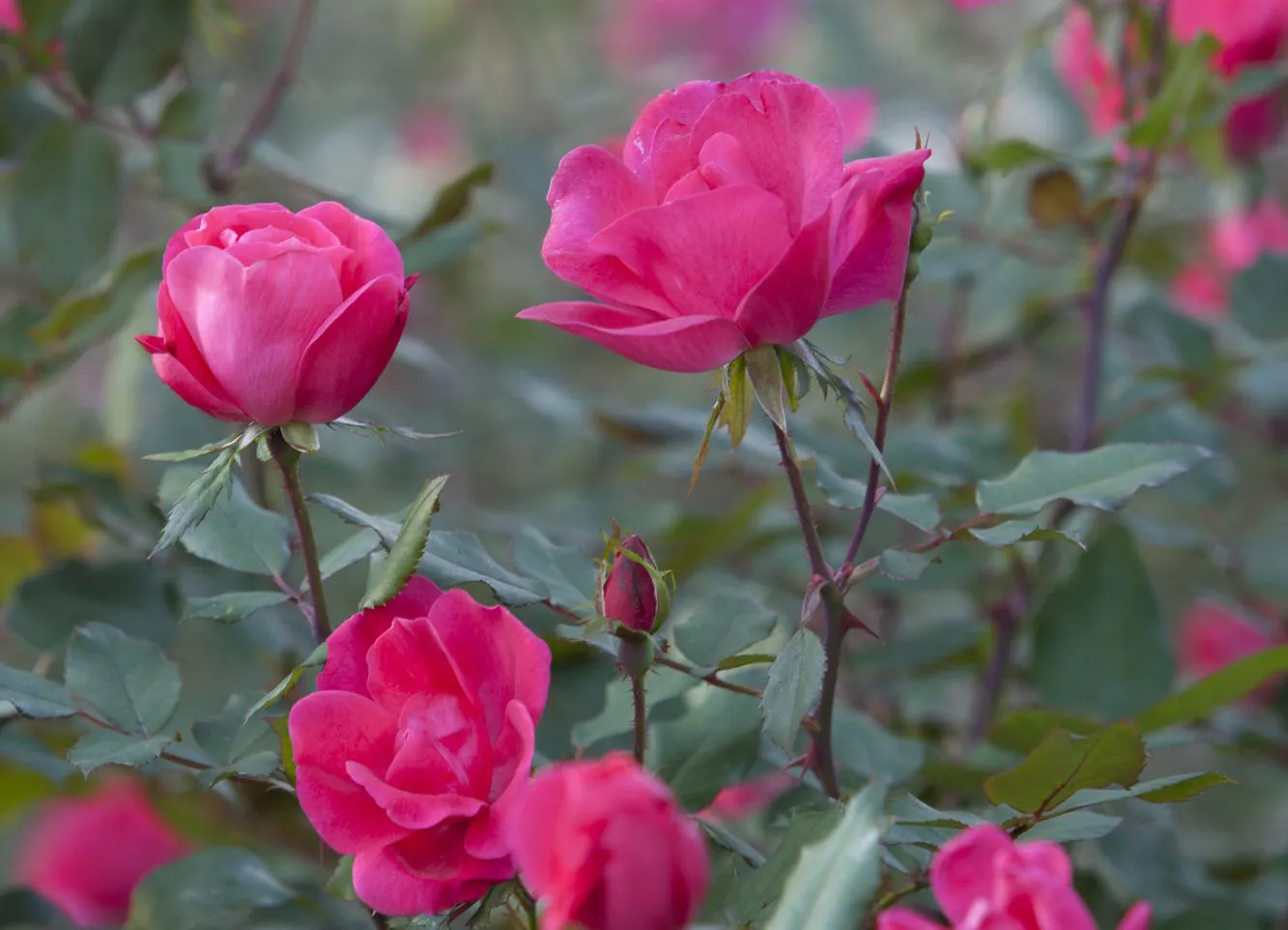
- Botanical name: Rosa species and hybrids
- Sun exposure: Full sun
- Soil type: Average, well drained, average fertility
- Soil pH: Slightly acidic (6.0-6.9)
Roses come in every shade of pink imaginable and are given as symbols of gratitude, appreciation and admiration. When choosing roses for your garden, consider how much effort you want to put into keeping them healthy and balance this with flower size. Hybrid tea roses require the most attention but give you large flowers on long stems. Floribunda roses produce large clusters of flowers that bloom continuously without much effort. These are just two of the many types available.
Bleeding heart
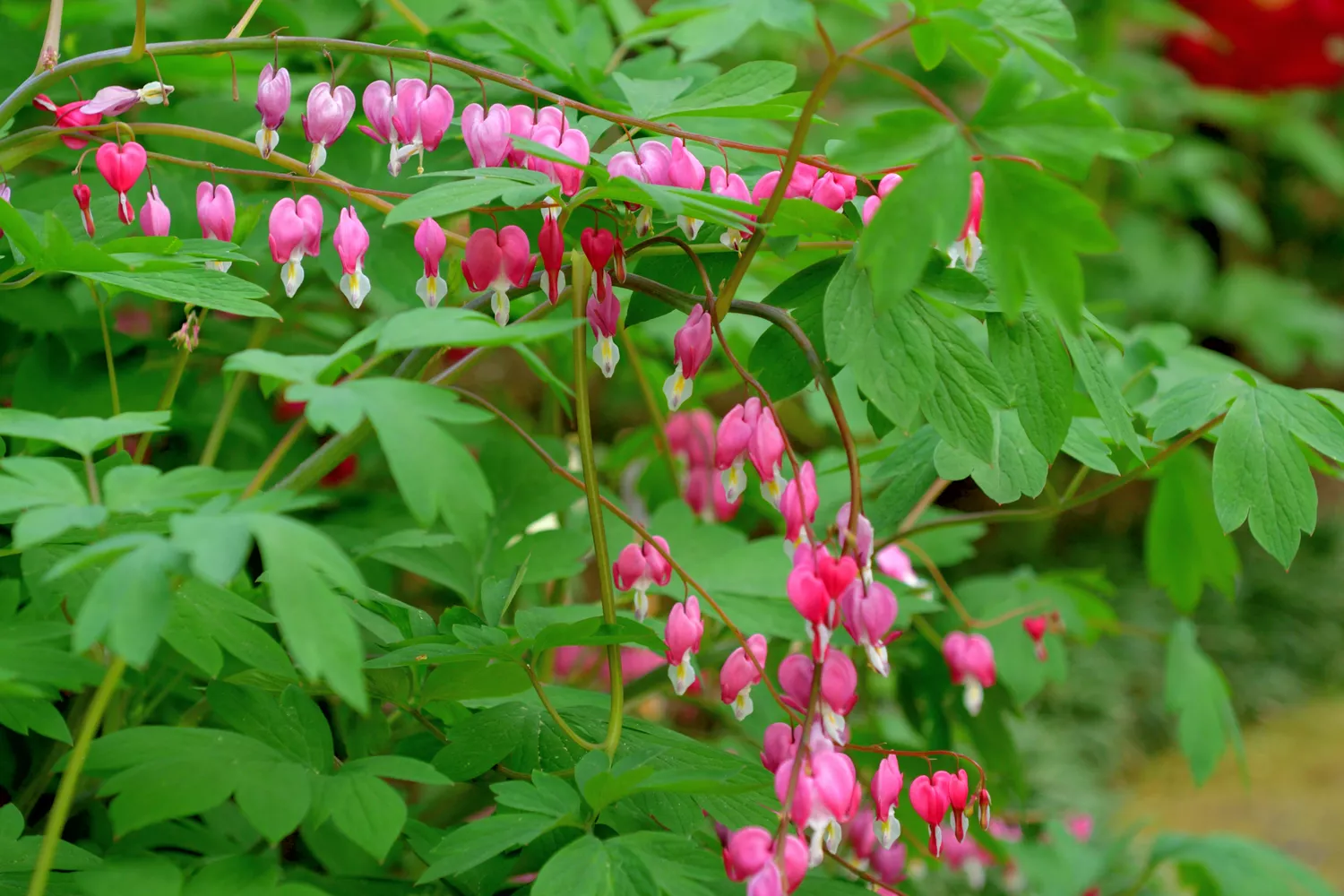
- Botanical name: Lamprocapnos spectabilis
- Sun exposure: Partial to full shade
- Soil type: Average, well drained, average fertility
- Soil pH: Slightly acidic to neutral (6.0-7.5)
This early-season favorite is beloved for its long, gently curved branches, from which perfectly heart-shaped flowers dangle like precious jewels. Although breeders have tried to incorporate more red into the flowers, the traditional bubblegum pink flowers are the most impressive, as their color really pops against the fern-like foliage. For a lovely, albeit less showy, native alternative, consider fringed bleeding heart ( Dicentra eximia ).
Lily
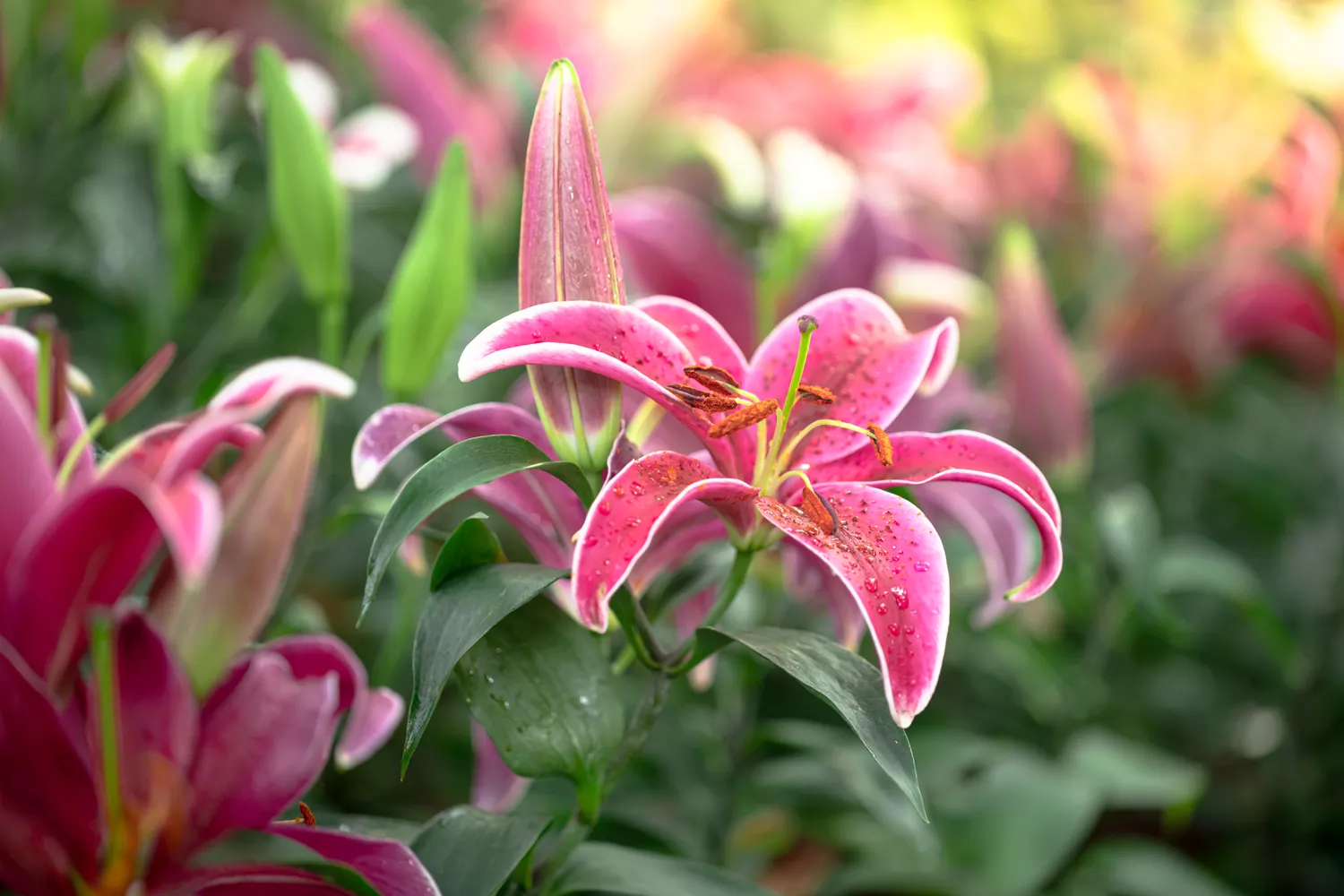
- Botanical name: Lilium species and hybrids
- Sun exposure: Full sun to partial shade
- Soil type: Medium, well-drained, rich in nutrients
- Soil pH: Slightly acidic to neutral (5.5-7.0)
Bright, vibrant lilies bring abundant joy to any garden. These flowers come in many colors, and among the pinks there are both warm and cool tones, many with multiple tones or speckled spots on their petals. These summer-blooming plants benefit from focusing their energy on bulbs instead of seeds. Cut back flower stems when they start to turn yellow. Lilies make lovely cut flowers.
Cleome
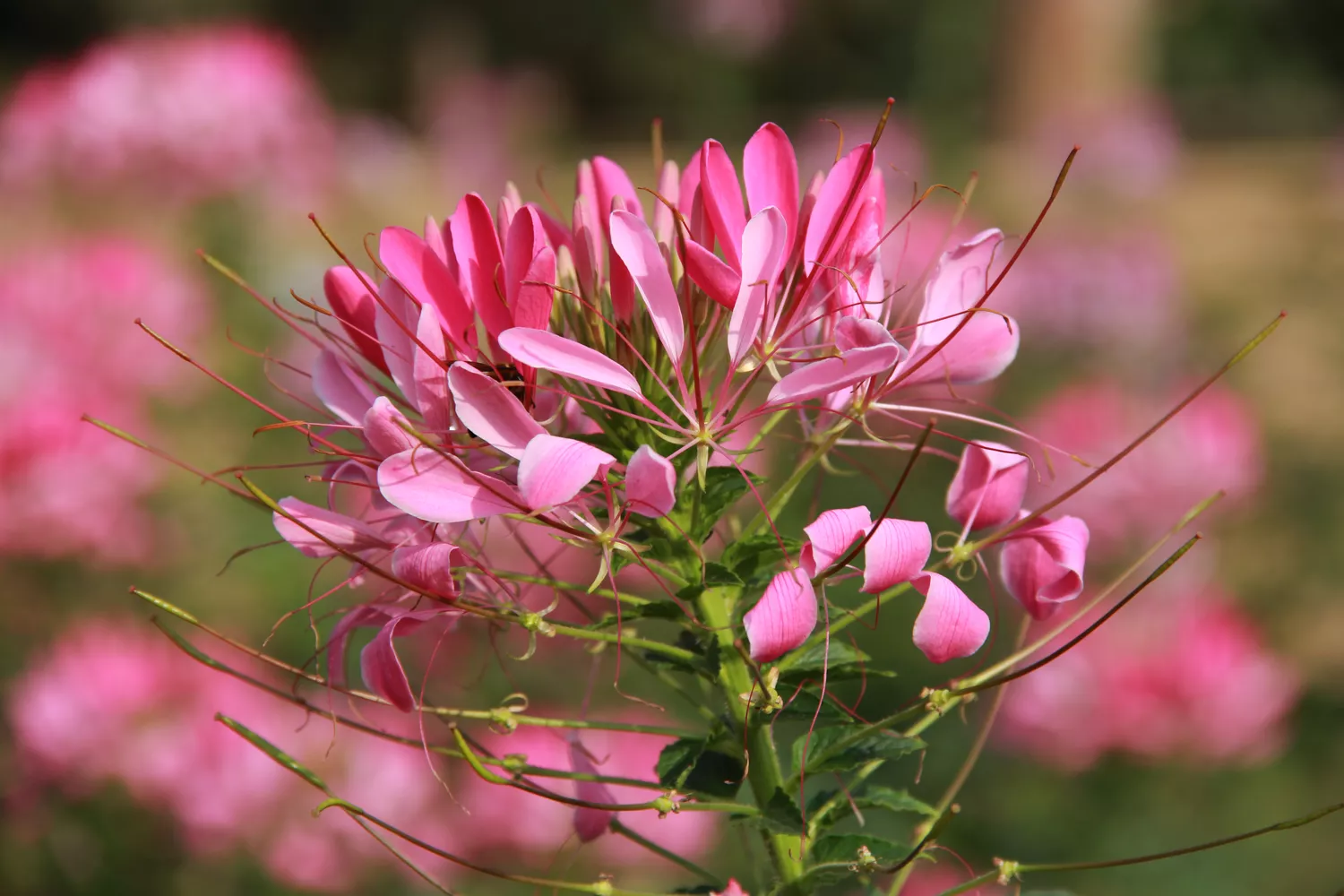
- Botanical name: Cleome houtteana
- Sun exposure: Full sun to partial shade
- Soil type: Dry to medium, well-drained, average fertility
- Soil pH: Slightly acidic to neutral (5.5-7.0)
Grow this fun, showy annual butterfly buffet. Large clusters of spider-shaped flowers stand on tall stems and give the plant the common name spider flower. The inflorescences are often two-toned, with the newest flowers opening dark pink to light reddish pink and fading with age. The plant blooms throughout the summer and continues into the fall. They self-seed in gardens but are not considered invasive.
fox gloves
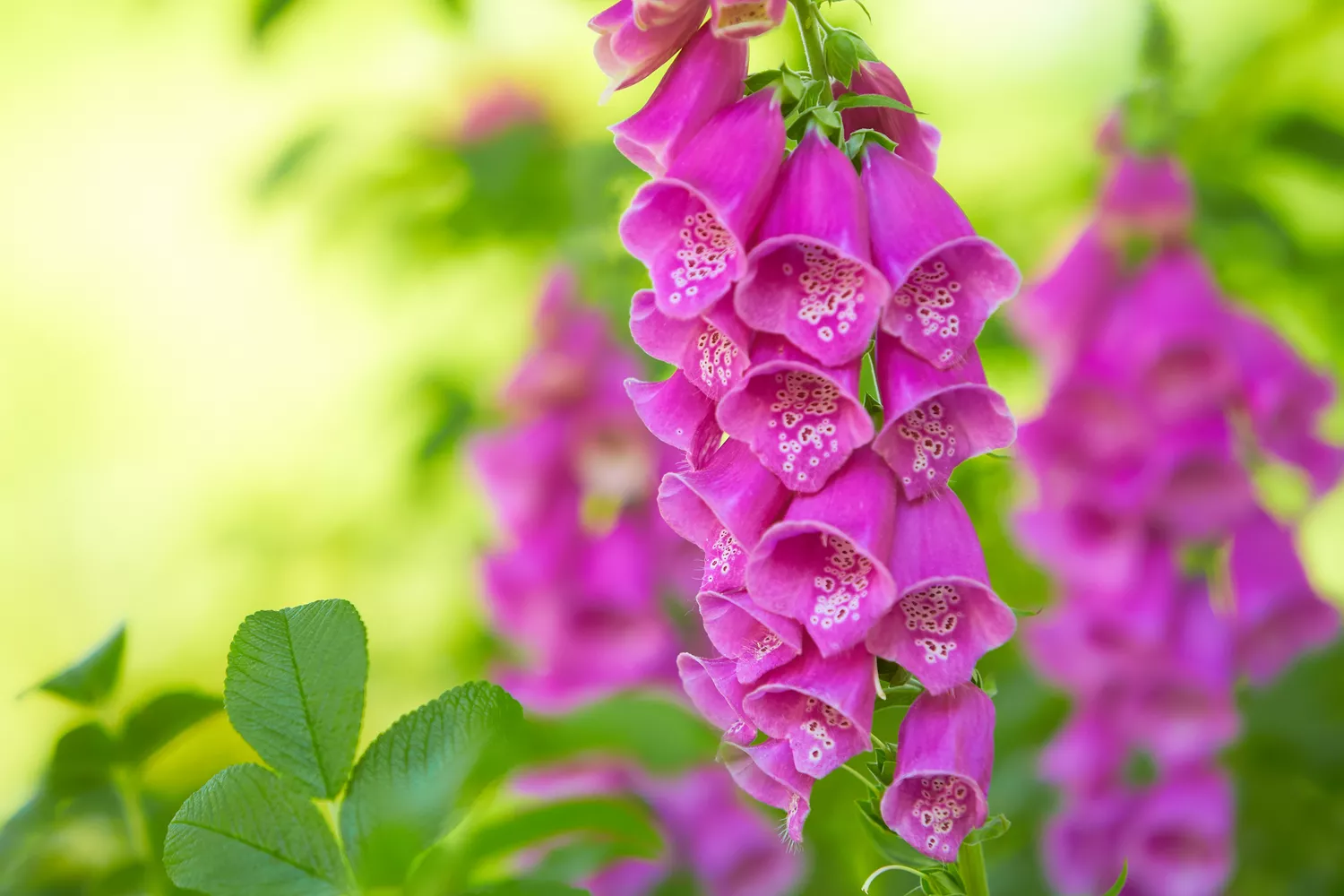
- Botanical name: Digitalis purpurea
- Sun exposure: Full sun to partial shade
- Soil type: Average, well-drained, medium to rich
- Soil pH: Slightly acidic (5.5-6.5)
Add country house charm to the garden with towering foxgloves. This classic beauty produces tubular, funnel-shaped blooms that attract hummingbirds and other pollinators. Foxgloves are biennials, producing a rosette of basal leaves in the first growing season and flowering in the second year. Plant several years apart so the plant blooms in early summer each season as it goes to seed in the garden. Note that foxglove is toxic to humans and pets.
medicine
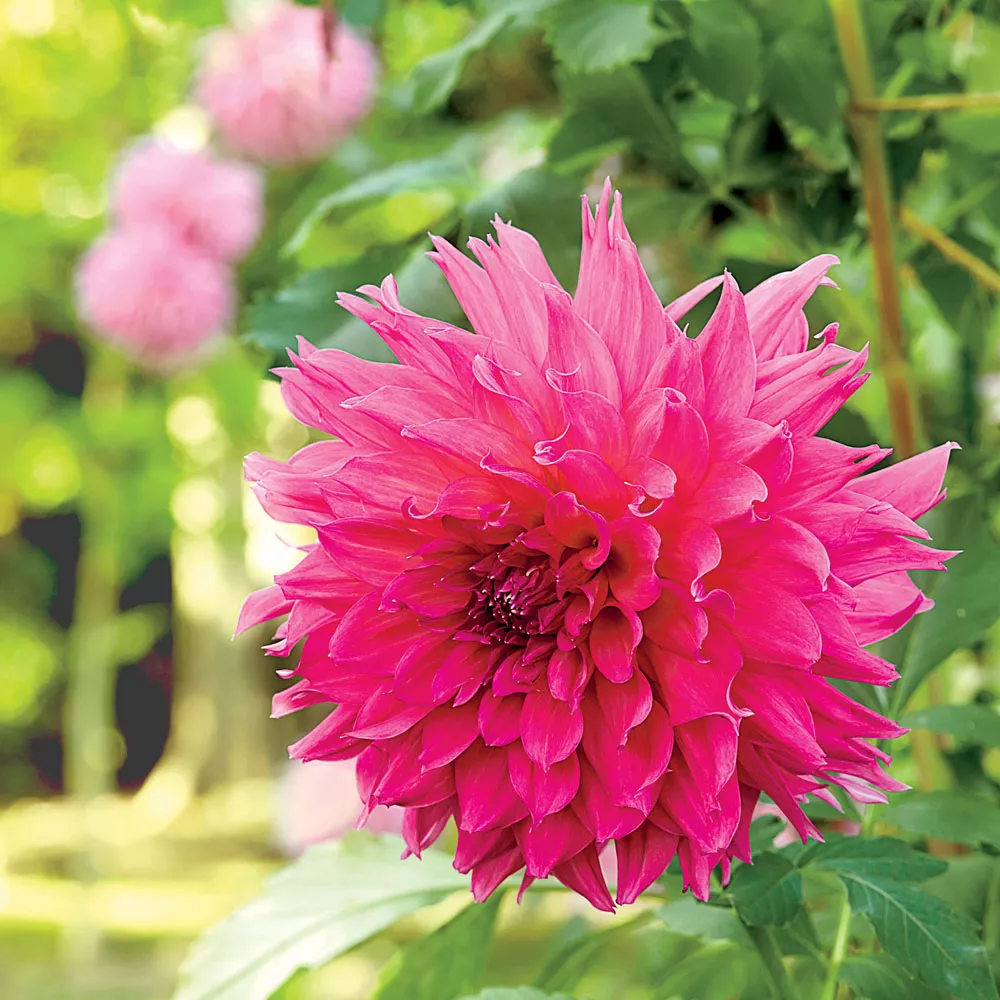
- Botanical name: Hybrid Dahlia
- Sun exposure: Full sun to partial shade
- Soil type: Moist, well-drained, rich in nutrients
- Soil pH: Slightly acidic to neutral (6.0-7.5)
Blooming from mid to late summer, dahlias are dazzling with bountiful blooms of many colors, shapes and sizes. From single anemone-like blooms to dinner-plate-sized blooms with petals, dahlias are truly remarkable for their diversity. These tender perennials only tolerate winters in USDA Hardiness Zone 7. Elsewhere, bulbs need to be dug up after the first frost, dried for a day and stored in a cool, dry place. cool for winter.
Egyptian star flower
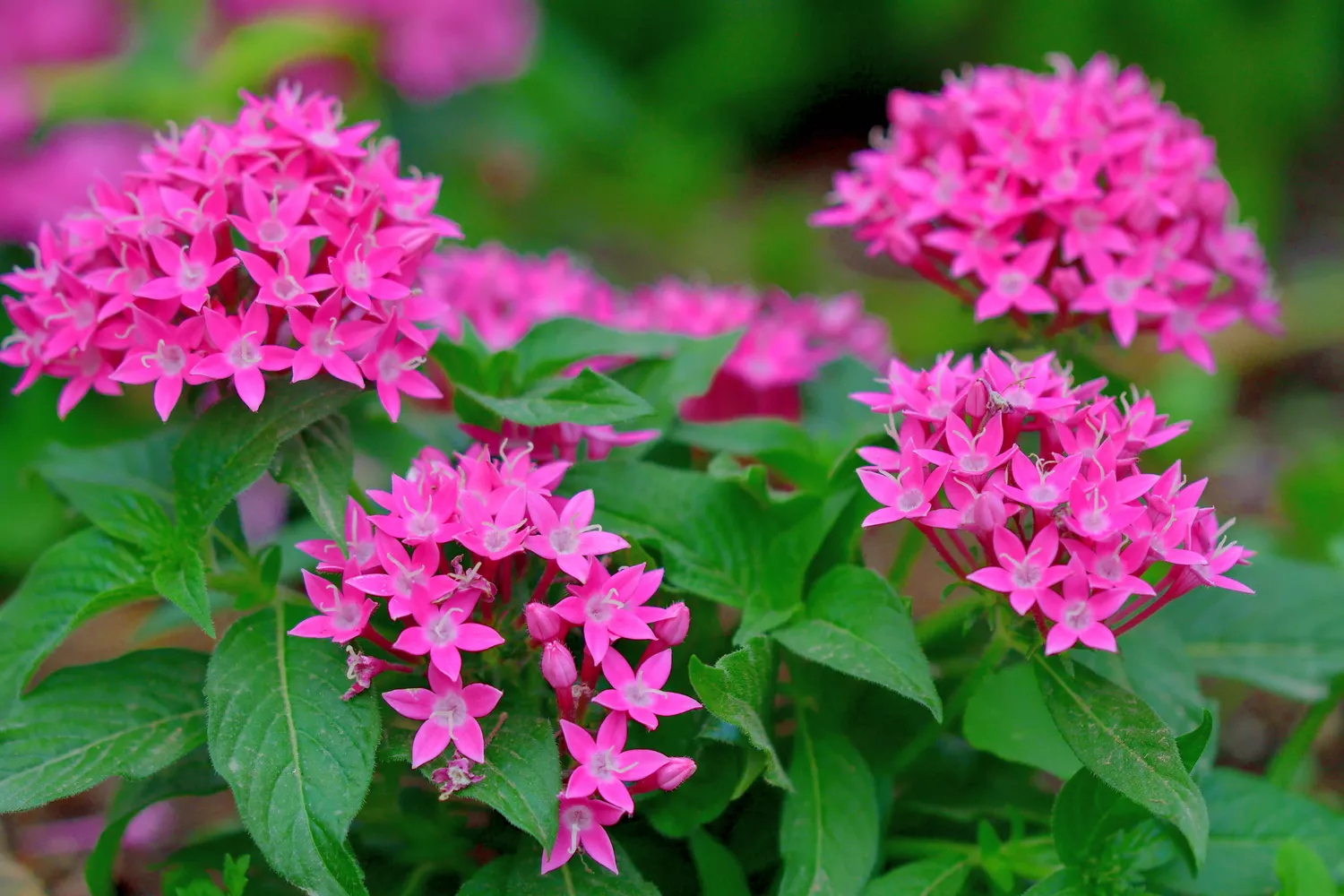
- Botanical name: Pentas lanceolata
- Sun exposure: Full sun
- Soil type: Average, well drained, average fertility
- Soil pH: Slightly acidic (6.0-6.5)
Named for its round, star-shaped flower cluster, the Egyptian starflower is a solid choice for gardeners across the South and beyond. Butterflies and hummingbirds are attracted to the flowers that cover the plant from summer to fall. This tender perennial is grown as an herbaceous perennial in Zones 10 and 11 and grown as an annual in cooler regions. The plant is tolerant of heat and humidity, as well as some drought, and can be grown easily from seeds or cuttings. Pinch young plants to encourage bushier growth.
Azalea
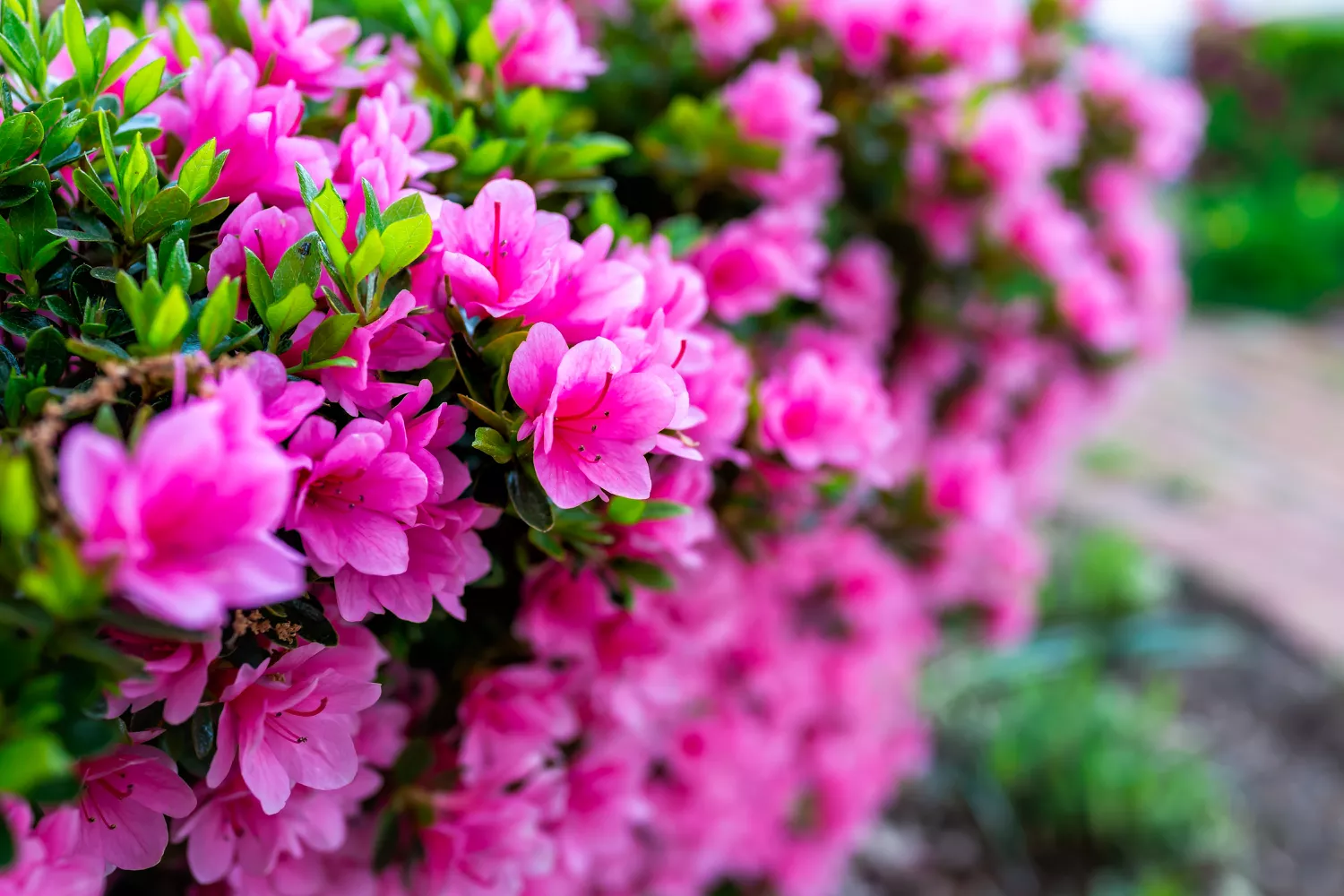
- Botanical name: Rhododendron species and hybrids
- Sun exposure: Partial shade; dappled sun
- Soil type: Medium, well-drained, rich in nutrients
- Soil pH: Acidic (4.5-6.0)
Azaleas thrive throughout the South, making them a perennial favorite. These low-maintenance shrubs are popular because they bloom in abundant spring. The tree flowers in many different colors, and the flowers bloom for several weeks. Many new flower varieties bloom year-round, providing vibrant color throughout the summer and blooming in the fall. You can extend the spring blooming season by combining early and late blooming varieties. Try to maintain the same color family for a pleasing display.
Fake Spirea
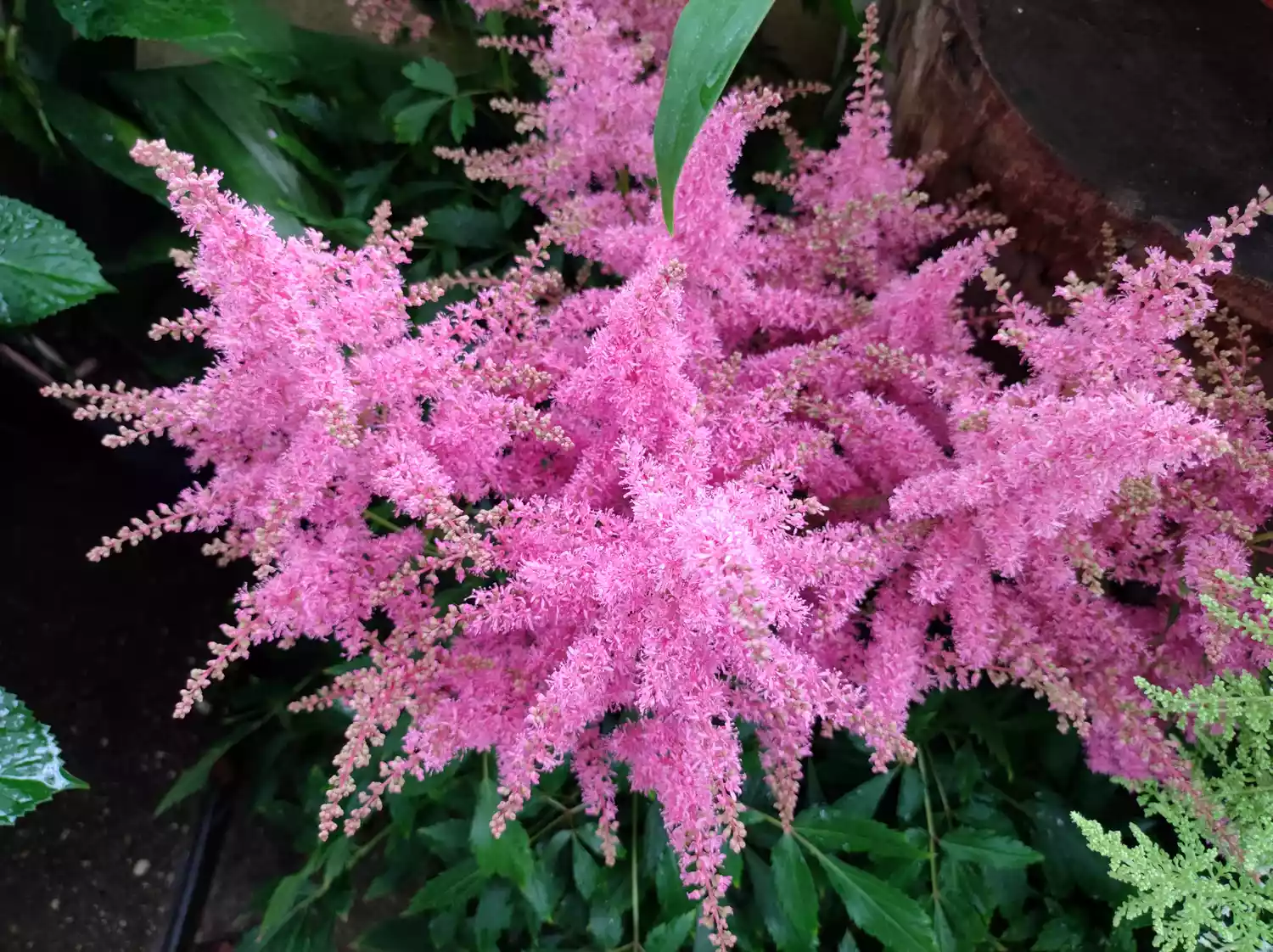
- Botanical name: Astilbe japonica
- Sun exposure: Partial to full shade; dappled sun
- Soil type: Moist, well-drained, rich in nutrients
- Soil pH: Slightly acidic to neutral (6.0-7.0)
Astilbe’s plumes add welcome color to shade gardens and woodlands. Astilbe can be a problem solver in challenging shade gardens. They tolerate heavy shade, resist predation by deer and rabbits and can be planted beneath black walnut trees. The flowers attract pollinating insects, while fern flowers and foliage beautify the landscape.
tea flower

- Botanical name: Camellia species and hybrids
- Sun exposure: Partial to full shade
- Soil type: Moist to moderate, well-drained, rich in nutrients
- Soil pH: Slightly acidic (5.5-6.5)
Producing beautiful rose-like flowers, camellias are a feature of Southern landscapes. Two of the most popular camellias in the garden are pink varieties but differ in bloom time. Camellia sasanqua blooms late in winter when many other flowering plants have gone dormant. The flowering time of the Japanese camellia, Camellia japonica , varies greatly depending on the variety. Some bloom as early as October, others as late as mid-March. Be careful to give these evergreen shrubs a protected location.
Phlox Garden
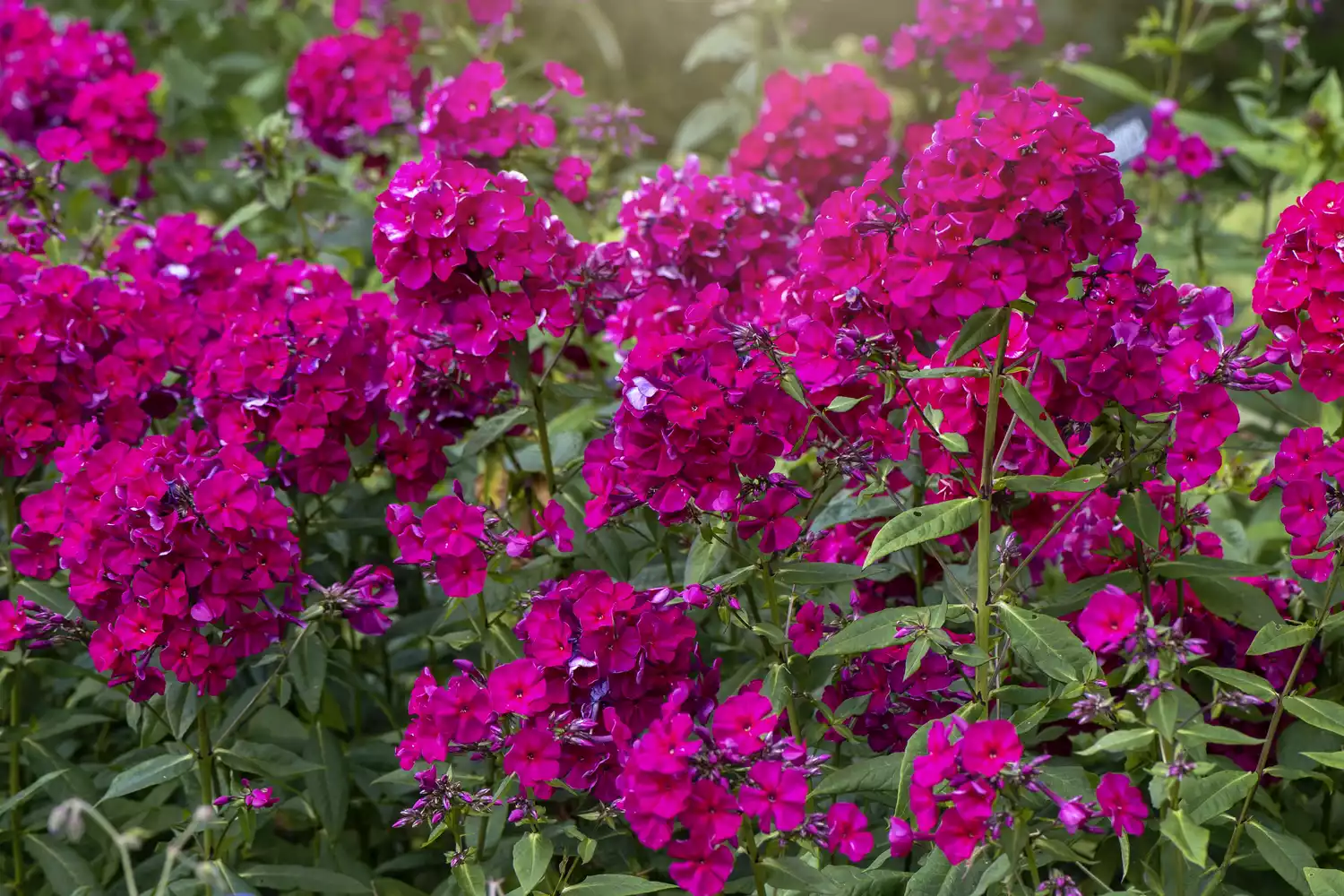
- Botanical name: Phlox Paniculata
- Sun exposure: Full sun to partial shade
- Soil type: Average, well drained, average fertility
- Soil pH: Slightly acidic to slightly alkaline (6.0-8.0)
This native beauty shines in the summer garden with its myriad flowers loved by gardeners and hummingbirds alike. Flowers come in many colors, many of which are cheerful pink. The long-lasting flowers stand on tall stems and make lovely cut flowers. Be sure to provide good air circulation around the plant to combat powdery mildew, and consider using newer resistant varieties.
petunia
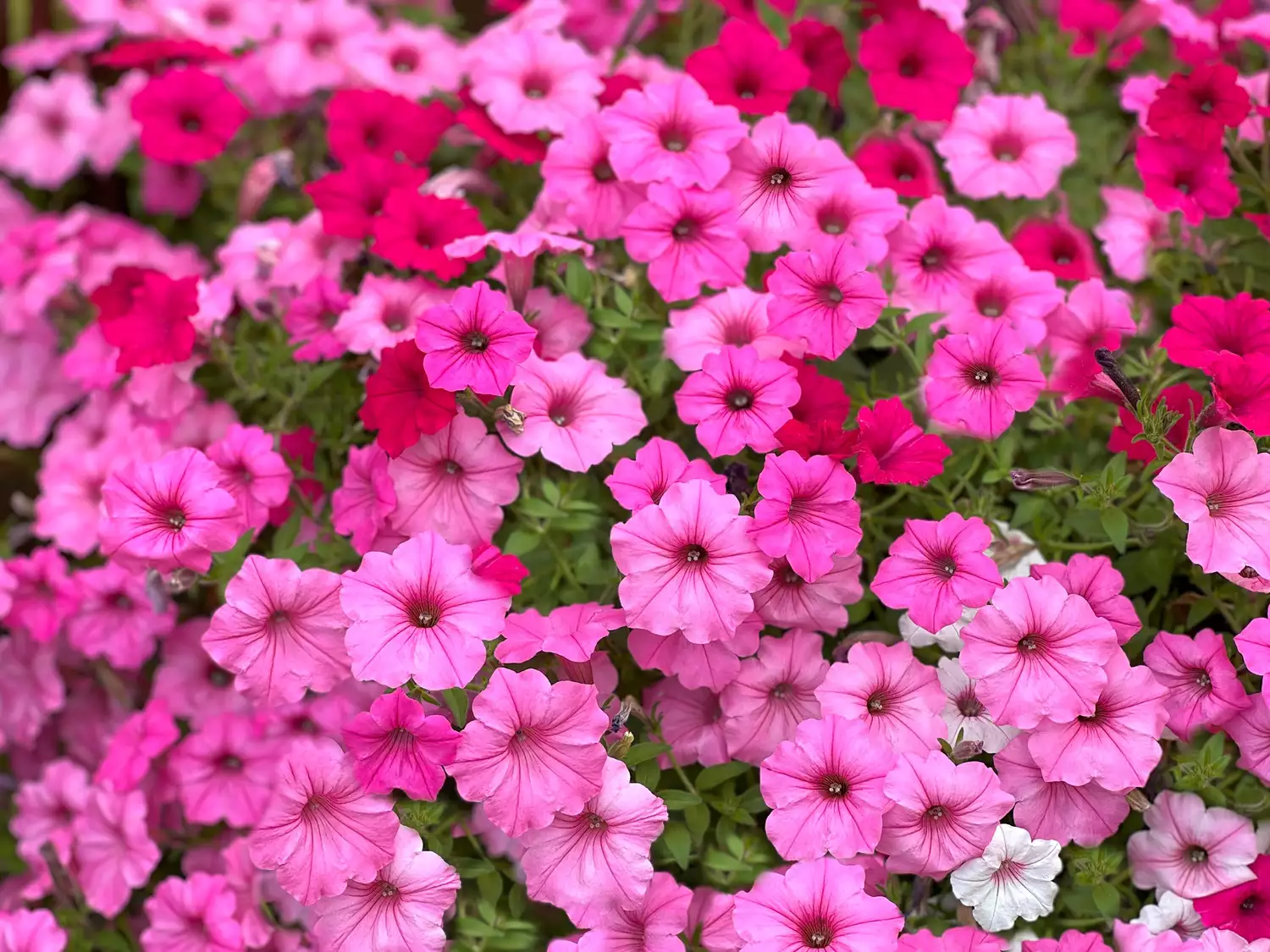
- Botanical name: petunia
- Sun exposure: Full sun to partial shade
- Soil type: Average, well drained, average fertility
- Soil pH: Slightly acidic (6.0-7.0)
There’s a good reason petunias are among the most popular bedding plants because they bloom endlessly! Flowering from spring to frost in vibrant shades with names like ‘Raspberry Blast’ and ‘Bubblegum’, petunias are extremely easy to grow and provide endless benefits. The plant flowers best in full sunlight. Pinch young plants back to encourage a bushier habit and deadhead for optimal flower production. Petunias are tender perennials often grown as annuals but are winter hardy in Zones 10 through 11.
universe
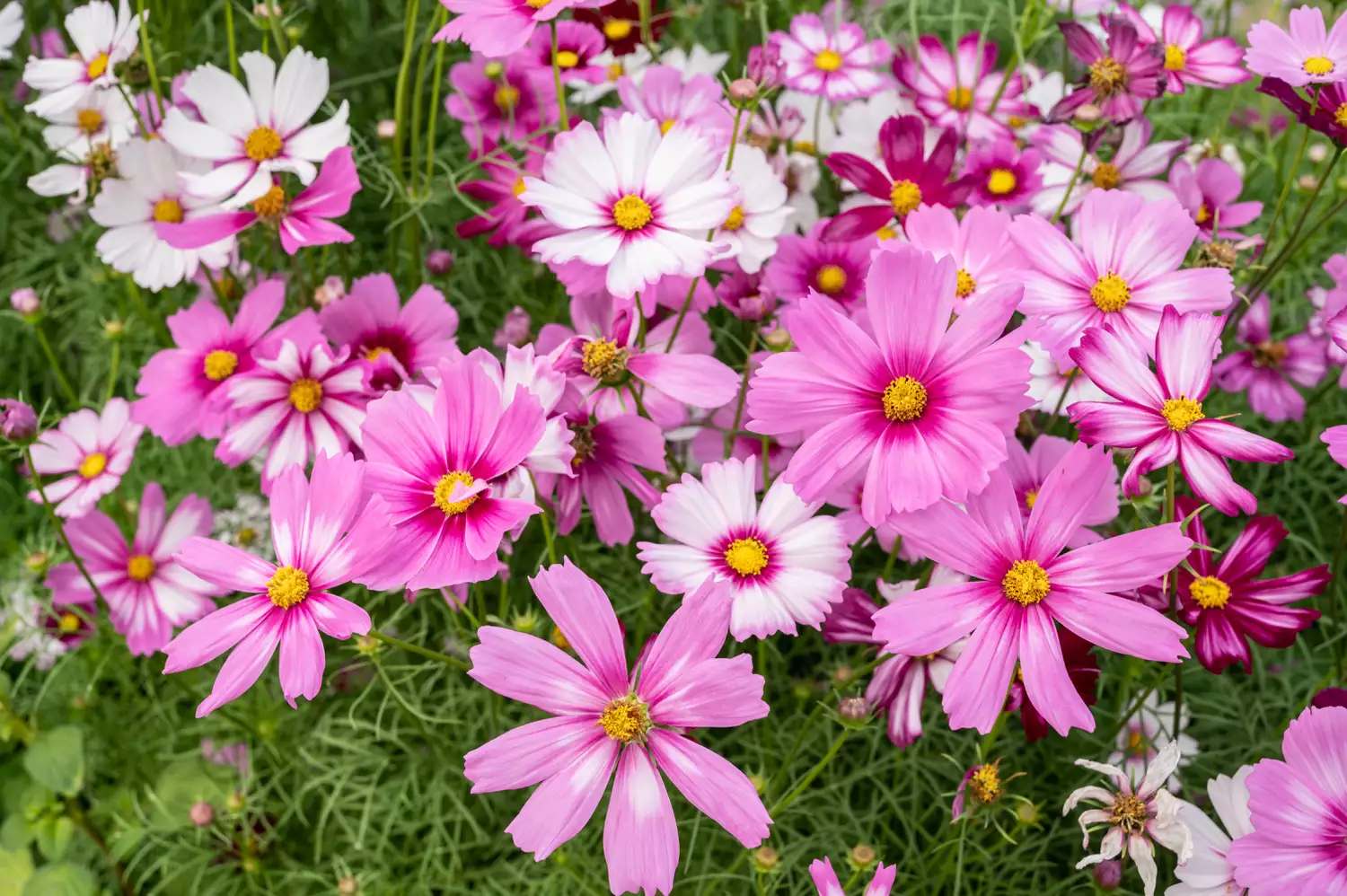
- Botanical name: Cosmos bipinnatus
- Sun exposure: Full sun
- Soil type: Medium to dry, well-drained, average fertility
- Soil pH: Neutral to slightly alkaline (7.0-8.0)
This interesting heat-loving annual plant is a butterfly magnet. The chrysanthemum-like flowers swirl their silky petals around the golden eye, basking in the sunlight. Cosmos attracts many pollinators including many native bees, and the seeds are eaten by white-throated sparrows, mourning doves, and American goldfinches. The plant self-seeds in the garden to bloom happily every year.
Comb flower
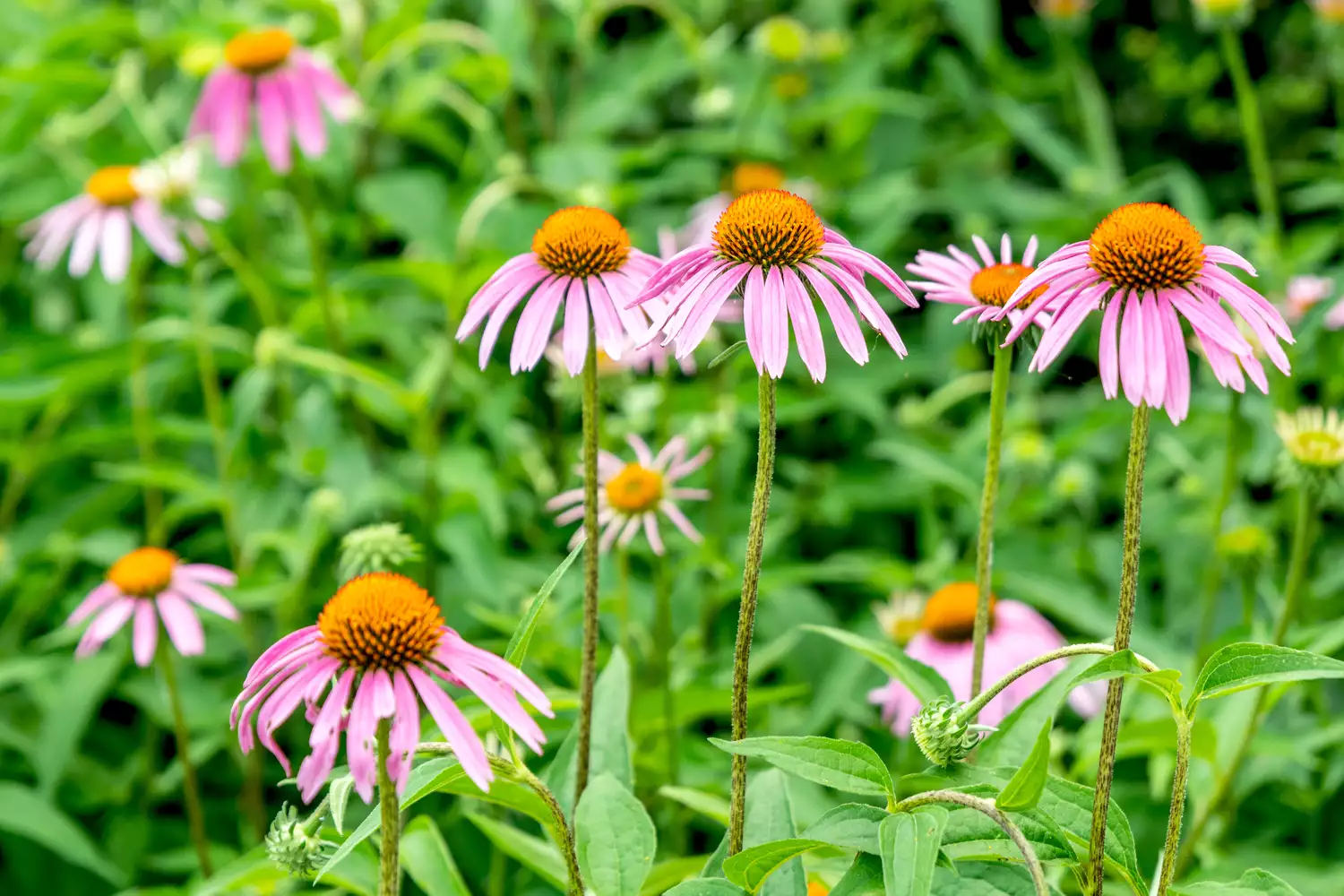
- Botanical name: Echinacea species and hybrids
- Sun exposure: Full sun
- Soil type: Medium to dry, well-drained, average fertility
- Soil pH: Slightly acidic to neutral (5.5-7.0)
Although one of the common names is purple coneflower, echinacea is actually more pink than purple. This native wildflower is ideal for mass planting in beds and borders, where the long-lasting blooms attract butterflies and other pollinators. In the fall, songbirds like to eat nutritious seeds like the American goldfinch. To attract birds and butterflies, choose varieties with single flowers, as double, ball-like varieties are sterile.
dianthus
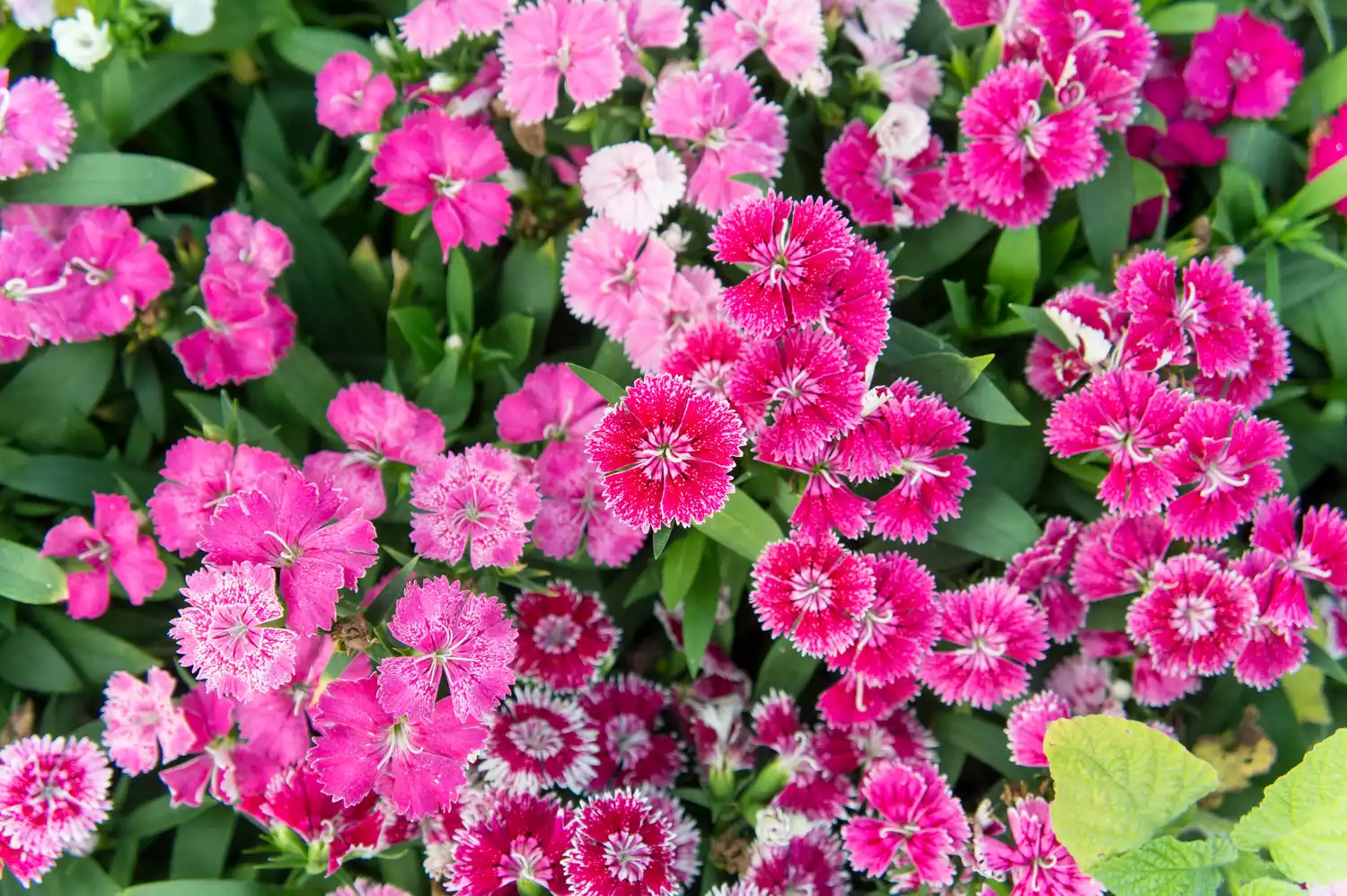
- Botanical name: Dianthus species and hybrids
- Sun exposure: Full sun to partial shade
- Soil type: Average, well drained, average fertility
- Soil pH: Neutral to slightly alkaline (7.0-8.0)
Although the common name “pink” does not refer to flower color, this perennial comes in many shades of pink. Instead, the name refers to the fringed or frilled edges of the petals, which look like they were trimmed with pink scissors. The flowers are often quite fragrant, with a spicy clove-like scent. Some species grow low and have evergreen foliage, others are taller but die to the ground in winter.
Hardy hibiscus
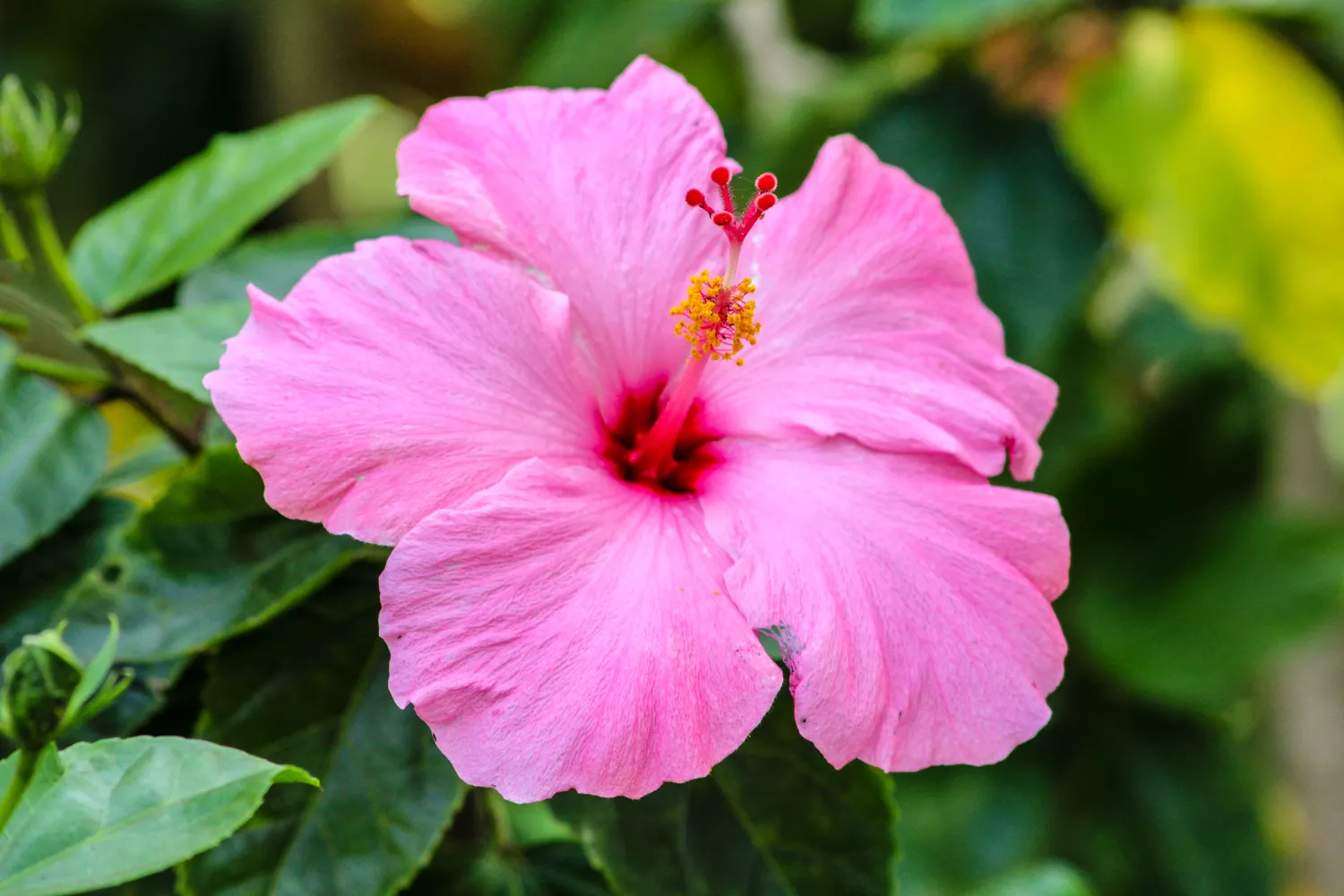
- Botanical name: Hibiscus hybrid
- Sun exposure: Full sun
- Soil type: Medium to moist, well-drained, rich in nutrients
- Soil pH: Slightly acidic to neutral (5.5-7.5)
This showstopper boasts larger flowers and bolder foliage than its tropical cousins, with some varieties producing blooms the size of dinner plates. Best of all, hardy hibiscus can survive winter temperatures by going dormant, unlike tropical hibiscus which cannot survive below Zone 10. All this while providing plenty of flair for the garden. Hardy hibiscus plants are bred from an often complex mix of species native to the southeastern United States, making them well suited to Southern landscapes.
